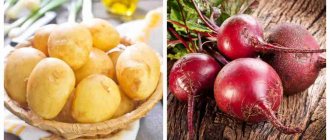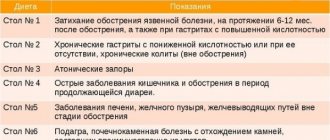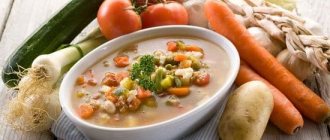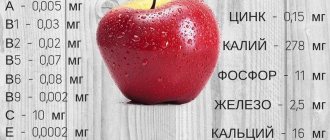Diet for gastroenteritis is an important stage in the treatment of the disease. Without following the basic principles of dietary nutrition, cure is impossible. You need to know what you can eat, how best to cook it in order to get the maximum benefit from what you eat. Of course, it is equally important for children and adults who have this disease to follow a diet.
The main purpose of dietary nutrition is to provide acceptable conditions and create the least burden on the gastrointestinal tract. It is very important to follow these rules at the first stage of the development of the disease.
Briefly about the disease
Gastroenteritis is characterized by an inflammatory process of the mucous membrane of the stomach and small intestine. The main cause of development is Reoviridae (rotavirus infection), it enters the human body through household contact or through poorly washed vegetables and fruits. Sometimes the infection spreads to the oral mucosa and larynx. When inflammation occurs in the large intestine, the disease is called gastroenterocolitis.
Gastroenteritis can be acute or chronic. You can reduce the risk of intestinal infection by following good hygiene.
Symptoms of gastroenteritis are as follows:
- nausea;
- vomiting and diarrhea;
- pain in the abdominal area;
- malaise, weakness.
It is worth noting that the acute, chronic form of the disease is considered quite serious for the health of adults and children. However, with timely implementation of therapeutic measures, the prognosis will be positive.
Symptoms of gastroenteritis in children
Bacterial and viral gastroenteritis in children is very severe. Together with vomit and loose stools, the body loses a lot of water. If a newborn develops symptoms of dehydration, irreversible consequences will occur. Together with the liquid, the most important biologically active substances and mineral salts of sodium, potassium, calcium, and magnesium are removed.
- defecation disorder: diarrhea with mucus, sometimes constipation occurs;
- disruption of the gastrointestinal tract: frequent vomiting, nausea, rumbling in the stomach, flatulence;
- pain in the navel and epigastrium;
- arterial hypotension to a minor extent;
- headache;
- lack of appetite, sudden weight loss;
- drowsiness, apathy, decreased motor activity;
- change in color of stool: a greenish tint appears.
The spread of the inflammatory process in the organs of the digestive system increases the severity and number of symptoms of intoxication. Children more often experience vomiting and the temperature rises to low-grade levels. If treatment is not carried out at this stage of gastroenteritis, complications may develop. The pathological process begins to affect the functioning of all vital systems, including the cardiovascular (decreased myocardial contraction frequency):
- During the day, the baby’s temperature rises and falls several times, cold sweat appears on the forehead;
- arms and legs begin to twitch or tremble finely;
- the skin becomes pale and moist to the touch, and the mucous membranes become dry;
- dizziness occurs, inability to maintain a vertical position for a long time;
- the baby is emotionally labile, he is constantly sleepy;
- blood pressure drops.
- skin loses elasticity and firmness;
- The mucous membranes of the nose, larynx, and eyes become dry.
The situation is complicated by constant vomiting - children are not able to take even a small sip of water, it simply does not stay in the body.
Gastroenteritis is especially dangerous in infants. Their fontanel sinks in and there is no lacrimation at all. The newborn’s body loses fluid not only through feces and vomit, but also through the pores of the skin. Losing only 10% of a baby's water can cause death.
The role of diet therapy in the disease
The success of recovery depends on healthy nutrition. And this applies to various disorders of the digestive system. A strict diet is very important, and no medications or modern methods will cope with the pathology if it is not followed.
Uncontrolled eating is completely unacceptable here. It is through diet that one can overcome the signs of the disease without the help of medications. Caring for the gastrointestinal tract will increase the process of regeneration of damaged organs.
After diagnostic measures, the gastroenterologist establishes a treatment regimen for each person individually. Prescriptions are determined by the form of the disease and the stage of severity of the process.
In the first two days, you need to completely give up food, but the person should get plenty of fluids. Non-carbonated mineral water, freshly squeezed juices, and weak tea are suitable for this.
At initial manifestations, it is important to give up bad habits, stop drinking and smoking, and maintain bed rest. And drinking plenty of fluids will help prevent dehydration, because this is possible with vomiting and diarrhea.
Recipes for gastroenteritis
It is not difficult to prepare dishes that correspond to therapeutic nutrition for enterocolitis. Despite the presence of strict restrictions, there are still many healthy recipes that allow you to eat varied and, as far as possible, tasty. Below are several ways to prepare dietary dishes.
| Name of the dish | Required Ingredients | Cooking method |
| Steam omelette | Milk (40 ml), egg whites (2 pcs.), salt - about 2 g. | Pour milk into the beaten egg whites in a bowl and add a little salt to the mixture. Place the resulting mass in a special container for steaming and bring until cooked. |
| Beef soufflé | Beef – 70 g, milk – 30 ml., 1 egg, 5 g butter, 1 g salt. | Remove all tendons and fat layers from the meat, then cook for at least 1 hour over low heat. Pass the cooked beef through a meat grinder, pour in the yolk, add salt and mix with the pre-beaten egg white. Place the resulting mass on a greased baking sheet and bake in the oven. Cooking time – 10-15 minutes. |
| Fish meatballs | Pike perch – 120 g, butter – 5 g, rice – 15 g. | To the boiled rice you need to add fish fillet minced twice and melted butter, then add salt and form into meatballs. The dish is steamed. |
| Stewed carrots | Carrots – 2 pcs., wheat flour – 3 g, butter – 15 g, 90 ml milk, 2 g sugar syrup, salt 5 g. | Cut the pre-washed and peeled carrots into small pieces (preferably slices), add salt, place in a sealed container, pour in sugar syrup, 50 ml of water, ½ part of the prepared butter and simmer until soft. After this, milk, flour, and remaining butter are added. The carrots must be stirred constantly, keeping the pan on low heat until the dish is cooked. |
The rehabilitation period is a crucial time, since not only the speed of recovery, but also the risk of relapse of the disease depends on how accurately patients follow the doctor’s instructions. To prevent re-infection or the development of chronic inflammation of the gastrointestinal tract in children, the diet after gastroenteritis should correspond to table No. 4c (within one month after diagnosis). This is complete nutrition, sparing the organs of the digestive system, but at the same time not limiting the child in the substances necessary for the normal functioning of the body.
General principles of the prescribed diet
Nutrition for gastroenteritis of various forms must coincide with the combined standards:
- do not produce irritating, chemical, mechanical effects on the gastrointestinal tract;
- protect the walls of the digestive tract with an enveloping structure;
- provide the body with all the necessary beneficial components, vitamins, minerals;
- do not overload the digestive tract;
- Follow the rules of hygiene: wash vegetables and fruits thoroughly, drink only purified water.
The above recommendations can be followed both by the correct selection of products and their preparation. In the first and second weeks after the onset of symptoms of the pathology, you should not eat fried or baked foods. It is good to take crushed food, puree or well-boiled food.
A diet for gastroenteritis in children should be carefully selected, which a doctor will help you create. You should prepare the most natural dishes possible, preferably single-ingredient ones. Various sweets and sugar should be excluded altogether.
You need to eat warm foods (36-39°C), hot or cold foods will irritate the gastrointestinal mucosa. You should eat often, 5-6 times a day, but in small portions. This regimen will help prevent the formation of vomiting at the first stage of development, and due to the restoration of intestinal motility, intestinal motility will work more energetically.
The importance of diet for gastrointestinal inflammation
With gastroenteritis, the inner lining of the stomach and small intestine is inflamed, resulting in vomiting and diarrhea, cramping pain, and often due to intoxication, myalgia, headaches, and weakness occur. If the inflammation of the organs is severe, then internal bleeding may begin, which will be clear from the presence of blood in the stool.
Gastroenteritis can also be a chronic disease. The disease can occur in mild, moderate, or severe form. Since in moderate and severe cases the body temperature rises to febrile levels, and there is also vomiting and diarrhea up to 10 times a day, dehydration often occurs.
Dehydration is manifested by dry mouth, dark urine and small amounts of urine, weakness, fever, nausea and vomiting, diarrhea, changes in appearance (circles under the eyes, redness of the skin, pointed chin). A diet for gastroenteritis helps to minimize the aggressive effect on the gastric mucosa, prevent dehydration, and reduce fermentation in the intestines.
What are the recommendations for nutrition during illness?
Often when treating a disease, doctors recommend not eating for 24 hours after the onset of symptoms. Only by emptying the stomach (vomiting) and intestines (diarrhea) will the body cleanse itself of toxins or the virus that caused the pathology. Since a lot of liquid comes out, it needs to be constantly replenished by drinking large amounts of liquid.
Water or herbal tea should be warm (15–55 ⁰C) and should be drunk in small sips over a long period of time to avoid gagging. A straw will help you drink little by little. In case of severe diarrhea and vomiting, it is advisable to take a rehydration solution, which you can buy at a pharmacy or prepare yourself (add a teaspoon of sugar and three-quarters of a small spoon of salt to 200 ml of orange juice).
Some experts believe that if an appetite appears, then you should not starve the patient, but you need to give him food that will not irritate either mechanically or chemically the gastric mucosa. Basic recommendations for diet for gastroenteritis:
- split meals (every 3 hours);
- dishes should be steamed, baked or boiled;
- you should not eat something very cold or, conversely, hot (so as not to irritate the mucous membranes);
- products should be moderately gentle.
These rules must be followed in the first days of illness.
The purpose of the diet is to prevent stress on the intestines and reduce fermentation in it
Recommended menu
When prescribing a diet for patients with gastroenteritis, the order in which foods are introduced into it should be considered. The first days after the formation of unpleasant signs, you can eat liquid dishes, it’s good if it is a broth made from dietary meat. For constant vomiting and nausea, slightly salted still water is acceptable.
A little later, when a person’s condition improves, the menu for gastroenteritis may consist of:
- vegetable chicken broth (starting from 3 days);
- rice water, porridge;
- baked apples;
- vegetables boiled or pureed.
On day 5, the diet for gastroenteritis in adults increases through:
- buckwheat, semolina, millet porridge;
- meatballs, steamed minced chicken cutlets;
- herbal teas (rosehip infusion), apple, pear infusions.
In the first 14 days, do not eat salty foods; you can add a small amount of vegetable oil to them. Also exclude any spices or seasonings (red, black pepper, dill, cinnamon).
Fermented milk products with a low fat content will help replenish the body with the necessary proteins and minerals (it is recommended to eat homemade yogurt, kefir, biolact). However, you cannot use sour cream, sour cottage cheese, or cheese. Drink plenty of fluids throughout the day, at least 2 liters.
What can you eat if you have gastroduodenitis?
In case of gastroenteritis, the diet should be strictly followed. Only a specialist can give all the recommendations on therapeutic nutrition and tell you what you can eat with this disease.
The basis of the diet should be only safe foods that do not injure the mucous membranes and do not provoke an increased secretion of hydrochloric acid. Thus, you can only eat sparing food.
Authorized Products
The patient needs to be fed when he wants: he must consume as much food as his body requires. A day after the onset of the disease, you can include other foods and dishes prepared from them in your diet. Eating for gastroenteritis is allowed:
- cereals: buckwheat, rice, rolled oats, semolina;
- boiled eggs;
- lean fish, meat;
- broth from chicken, vegetables;
- boiled vegetables;
- dried bread, biscuits.
For drinks, it is recommended to drink weak tea, a herbal decoction of rose hips, dried fruit compote, and still medicinal mineral water.
Advice! As a fruit, you can eat ripe banana. It helps restore electrolyte balance, speed up the process of restoring digestion and remove harmful waste products of pathogenic microorganisms from the body.
Allowed dishes
A patient suffering from gastroenteritis can eat dishes prepared from products from the approved list. After the attacks stop (approximately 2-3 days), the following dishes are included in the diet:
- porridge from semolina, rice, oatmeal or buckwheat with water;
- slimy soups (vegetable or chicken) with the addition of vermicelli;
- steamed meatballs or cutlets from lean meat (chicken, rabbit, veal);
- boiled fish;
- vegetable puree (potato, carrot);
- steam omelette;
- fish, meat broth;
- jelly, fruit jelly, steam pudding;
- cottage cheese casserole;
- baked apples, pears.
This is not a complete list of dishes that can be consumed with gastroenteritis. The attending physician should be familiar with the detailed list. We should not forget that food must be heated to a temperature of 30-40 degrees before consumption.
Prohibited Products
The list of foods that are harmful for gastroenteritis is very long. This includes fruits, vegetables with a high content of coarse fiber, acids and the presence of animal products.
In acute gastroenteritis, the following should be completely excluded:
- fruits, vegetables (lemon, orange, garlic, onion, radish, sorrel);
- fatty meat, fish;
- various sweets: cakes, jellies, sweets, chocolate;
- sausages, smoked meats;
- cocoa, coffee, carbonated drinks, kvass;
- fresh bread, pastries, crackers;
- legumes, mushrooms;
- mayonnaise, sauces, preservatives.
Also avoid drinking milk. These products increase appetite and irritate the mucous membrane of the stomach and intestines. For various gastrointestinal diseases, it is necessary to avoid alcoholic beverages.
The basic principles of treatment are that at the time of exacerbation of the disease, it is forbidden to eat fried, salted, baked, fermented foods, which lead to fermentation and intestinal irritation in adults, which causes new dyspeptic disorders.
You can introduce prohibited foods into your diet about a month after the onset of symptoms and therapy. Otherwise, there is a possibility of repeated inflammation of the organ walls, as well as transformation into a chronic form.
What diet should you follow for chronic colitis with constipation?
The basic rules of diet therapy for weakened intestinal motility, accompanied by constipation, are in many ways reminiscent of recommendations for nutrition for people with high blood cholesterol. It is necessary to reduce the calorie content of the daily menu, reduce the consumption of fats and sugar-containing products, and reduce the amount of animal fat entering the body by replacing it with vegetable oils.
It is also helpful to follow the guidelines below:
- It is necessary to consume as much black bread as possible made from wholemeal flour, as well as with wheat bran. You should refrain from other types of baking during the period of exacerbation of the disease;
- The diet must include raw vegetables, in particular, carrots, beets, white and cauliflower, zucchini, pumpkin, turnips;
- You can also eat fresh and dry fruits and berries in any quantity, for example, bananas, dates, figs, all citrus fruits, apples, prunes, dried apricots, blackberries, viburnum, blueberries and currants;
- In the absence of allergic reactions and individual intolerance, you can also eat various nuts;
- In case of chronic colitis with stool disorders in the form of constant constipation, it is forbidden to eat any fried foods, especially fish and meat, baked goods prepared on the basis of wheat flour, fats, smoked meats, mushrooms, hot spices, radishes, radishes, garlic, semolina and rice porridge, as well as strong tea, coffee and chocolate.
In the morning, after waking up, it is recommended to drink 250 ml of water at room temperature on an empty stomach, adding 2 teaspoons of granulated sugar and a small slice of lemon. It is also useful to drink natural fruit and vegetable juices diluted with water in equal proportions throughout the day. Before going to bed, you should drink a glass of fresh kefir.
Why gastroenteritis occurs and how to avoid it
The causes of the disease are, as a rule, infection with viruses or bacteria that enter the body with food, through breathing, or through close contact with a sick person.
However, non-infectious causes of gastroenteritis are also possible. This usually involves long-term use of certain medications, such as antibiotics, and consumption of certain foods.
The incubation period of the disease can last from several hours to 3-5 days. With proper treatment, gastroenteritis goes away in about a week.
Considering the causes of the disease, prevention comes down to careful personal hygiene and eating only fresh, well-prepared foods and always clean water. It should be borne in mind that a carrier of gastroenteritis can transmit it for several days after recovery, so he needs to use individual utensils and hygiene products, and others should refrain from close contact with him (hugs, kisses, etc.). You should also wash your hands after interacting with the carrier.
In children, the risk of developing the disease is greater, since their immunity is not yet fully formed.










